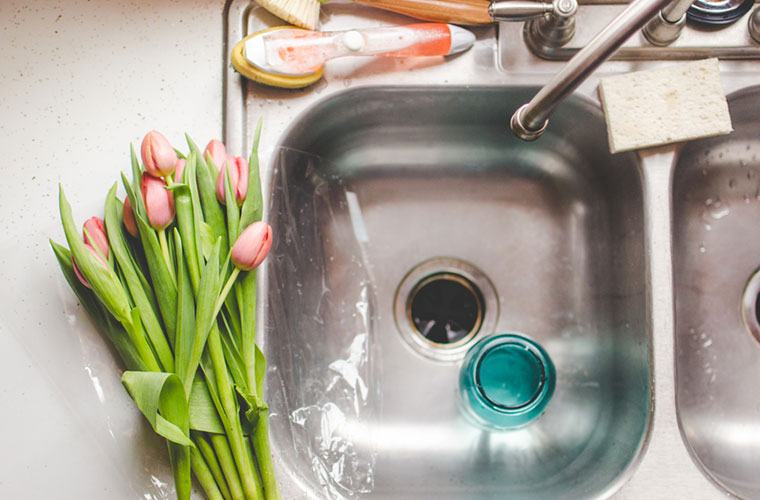The 1-Minute Hack to Kill Nasty Bacteria on Your Kitchen Sponge
If your skin is crawling right now (same, by the way), you can breathe easy, because most of these strains are completely harmless.
"There's bacteria all over," says Jennifer Quinlan, PhD, a food microbiologist. "So the bacteria that's on our skin, for example, would then potentially be on a sponge; however, because a sponge might often be warm and wet, they would multiply there."
"The bacteria we get concerned about are food-borne pathogens."
The problem, according to Dr. Quinlan, is that it's impossible to tell the good bacteria from the harmful ones. "The bacteria we get concerned about are food-borne pathogens," she says.
In a field study conducted by her research team at Drexel University, Dr. Quinlan found some of these bad guys such as listeria, e. coli, campylobacter, and staphylococcus (all known to cause stomach bug-like symptoms) on kitchen sponges in Philadelphia homes. According to Dr. Quinlan, for people with compromised immune systems—meaning children, adults over the age of 55, and anyone with an autoimmune disorder—coming into contact with these pathogens could potentially lead to a doctor's visit.
Of course, these harmful bacteria on your dish-cleaning tool don't just appear from thin air. First, they have to be introduced to your home through contact with foods such as raw meat or even contaminated produce (which is less common, but still possible). The bacteria, then, have to spread to your sponge by cleaning dirty dishes or wiping off an icky surface.

{{post.sponsorText}}
The good news? According to Dr. Quinlan, the chances of you encountering these food-borne pathogens in your home is pretty small—as in two to 10 percent. The bad news? "You really can't tell if they're there or not," she says. Fortunately, she has an ultra-easy fix up her sleeve to stop these pathogens in their tracks.
Keep reading for the one-minute, chemical-free method backed by Dr. Quinlan.

How to deal with your sponge
Dampen your sponge and then put it in the microwave for one minute. It really is that easy! "There's no bleach and no chemicals," says Dr. Quinlan, "It's just the moisture and the heat, which will kill bacteria." This method is also backed by the USDA.
Dr. Quinlan did note that this method won't sterilize a sponge completely—meaning some bacteria will likely remain on the surface of it—but it's an effective method to kill any food-borne pathogens that may be there.
As far as how often you should you nuke your sponge? Dr. Quinlan says about once a day to ere on the safe side. Then, when you leave it to dry, make sure that it's standing up or on a wire rack so that it dries completely. It's really that easy to destroy the bad guys. Now where's my cape?
If you're on a healthy home kick, consider investing in an air purifier—your pores will thank you. Also, did you know that your towels should be washed *this* often?
Loading More Posts...